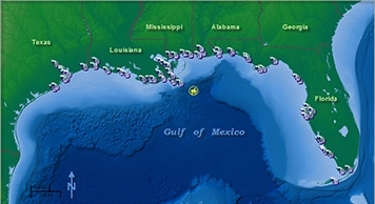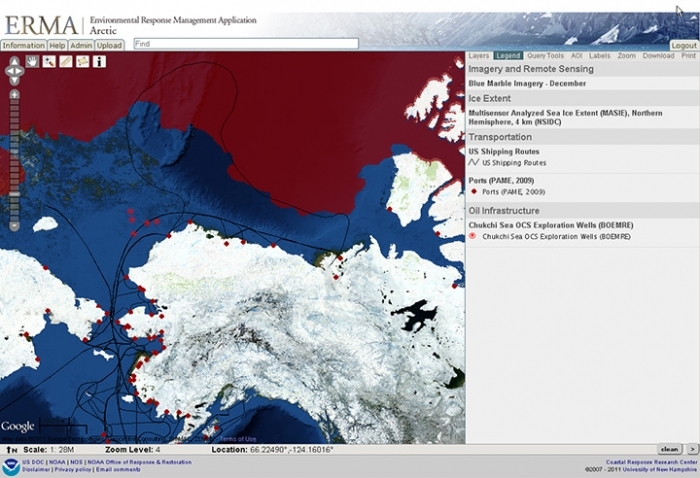Environmental Response Management Mapping Tool
Contents
Environmental Response Management Application (ERMA)
ERMA® is an online mapping tool that integrates both static and real-time data, such as Environmental Sensitivity Index (ESI) maps, ship locations, weather, and ocean currents, in a centralized, easy-to-use format for environmental responders and decision makers.
ERMA enables a user to quickly and securely upload, manipulate, export, and display spatial data in a Geographic Information System (GIS) map.
Developed by NOAA and the University of New Hampshire with the U.S. Environmental Protection Agency, U.S. Coast Guard, and the Department of Interior, ERMA provides environmental resource managers with the data necessary to make informed decisions for environmental response.
|
Arctic ERMA enables emergency planners and responders to present in a spatial environment depictions of sea ice concentrations from the National Snow and Ice Data Center together with aerial observations of changing ice flows. This flexibility and adaptability provides stakeholders in the Arctic with crucial information about where sea ice is thinning in an easy-to-understand way. |

